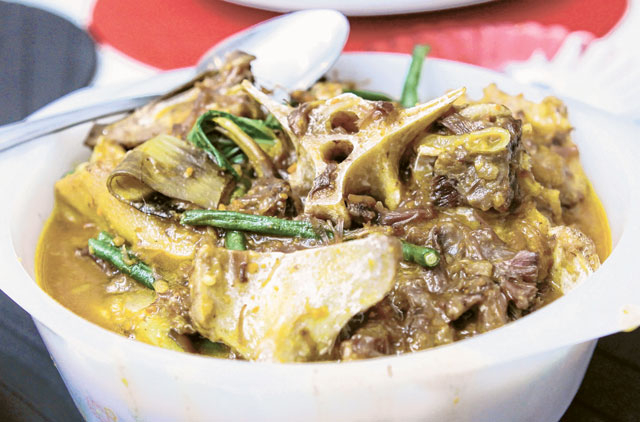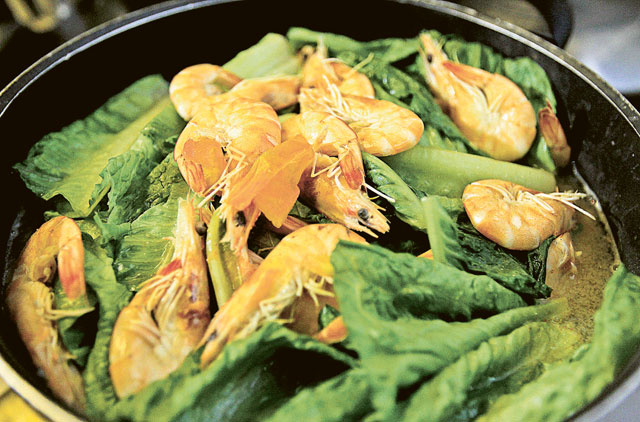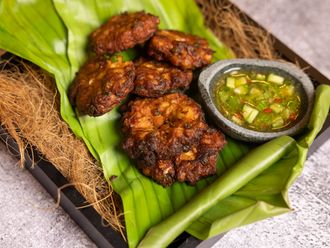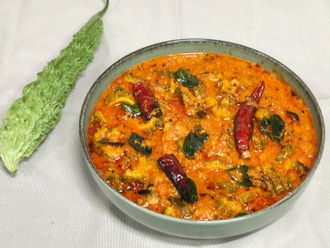
Filipino food is a wonderful fusion of diverse influences — Spanish, Malay, Chinese and even American and European. Combining these distinct international flavours, Filipino food emerges with a quirkiness that sets it apart from the rest. Italian spaghetti, for instance, given a complete makeover to suit Filipino food preferences, is often sprinkled with sliced hotdogs.
In addition to these influences, there are even more quirky foods that can be rightly called authentically Filipino, and which would surely satisfy adventurous tastebuds. The balut, perhaps, tops the list of exotic Filipino food as it is eaten all over the country. A Filipino street food, balut is a fertilised duck egg with an almost-developed embryo that is boiled and eaten with a dab of salt and vinegar.
Of course, in a country with more than 7,000 islands, it's a safe bet that there are many more Filipino dishes just waiting to be discovered. There is lansiao (bull-testicles soup, also called "Soup No 5") in Cebu, crispy kamaru (crickets) in Pampanga, kaleskes (intestines) in Pangasinan, and Palawan's tamilok, which is a shipworm (yes, it's a worm) that is eaten raw and is prepared with vinegar, chopped chilli peppers and onions.
Popular fare
On the other hand, there are also the mainstream culinary offerings that you can find in almost any dining outlet across the country: kare-kare, adobo, dinuguan, sinigang, pakbet and bicol express to name a few. Many of the mainstream dishes have regional roots but have become popular all over the country because they are tasty and easy to prepare.
With so many culinary delights to offer, it is therefore puzzling why Filipino cuisine is not as popular as its Asian counterparts. You often hear non-Filipinos talking about their dining experiences in various Thai, Chinese, Japanese or Indian joints, but hardly about any notable Filipino restaurant.
"Maybe this is because of the influence of Spanish, Malaysian and other Asian countries. We hardly use any strong spices, which sets our food apart from other Asian countries that focus on chillies, curries. We do have these dishes as well, although they are mildly spiced if you may say so," says Christine Gonzales, a Dubai-based Filipino office manager and culinary enthusiast.
Indeed, it has been a Western concept to equate Asian cuisine with exotic food choices. Chillies and other strong spices form the foundation of many dishes in other countries such as Thailand and India, although there are many regions in the Philippines whose passion for spices can rival those in Thailand, India and other spice-loving countries, the Philippines, in general, is not well-known for its spicy cuisine.
Rising demands
In Dubai, although Filipino cuisine lags behind its Asian counterparts as a favourite dining option, the market for authentic Filipino food is emerging as it is gradually being introduced in the emirate and across the UAE. While most Filipino restaurants and food stalls in the UAE cater mainly to Filipino diners, the recent opening of a new branch of Filipino restaurant chain, Barrio Fiesta has opened the doors of Filipino cuisine to both Filipinos and non-Filipinos with the restaurant's signature dishes.
More recently, Max's, another popular Filipino restaurant brand, followed suit with its first branch in Dubai which saw Pinoys queueing out the door for traditional dishes.
"What prompted us to open a branch here in Dubai is to reach out to where Filipinos are. Bringing the experience and enjoyment of food," said Marc San Juan, corporate marketing manager, Max's.
Nonetheless, bringing authentic Filipino food to Dubai has been a challenge. For instance, oneFilipino fast food chain that has opened a few branches in Dubai has not been as popular among Filipinos as it is in the Philippines, mainly because patrons complain that the food choices are not as tasty as they expect them to be.
For the love of food
"We all know that Filipinos love eating. One of the most important things we made sure is to maintain the same quality and taste. We had training in the Philippines and we even brought some of our staff and crew here to maintain the quality and authenticity of our food and services. We also added a twist to our menu to cater to non-Filipino customers with new dishes such as lamb adobo," San Juan adds.
"This is the time for Filipino cuisine to be really highlighted internationally. Filipino food has a great heritage in terms of the flavours that we offer. There really is a potential to bring it to the international market," he added.
To realise its goal of incorporating an international twist to its traditional Filipino offerings, Max's has hired an Indian chef who underwent extensive training in the Philippines.
"I undergo training in the Philippines to make sure to maintain the same Filipino taste. There are also many challenges, including that of getting the same suppliers, but we have managed. Working in a Filipino restaurant is really challenging but I'm really enjoying it," said Max's Indian chef Frances Mathias.
Seejo Karedan, Max's brand manager, adds: "The opening of Max's restaurant in Dubai has had a phenomenal response. We are serving almost 1,000 customers a day."
With so much interest in dining out in Dubai, there is certainly great potential for Filipino cuisine to stand out in the chaos of fast food chains and dining options in the emirate. As there are yet not many authentic Filipino dining options available, it is a perfect time to introduce Filipino cuisine as a great addition to Dubai's list of international culinary offerings.
Kare Kare
Kare Kare is a Filipino stew made from peanut sauce and vegetables, stewed oxtail and occasionally offal or tripe. It is eaten with bagoong (shrimp paste). Traditionally no feast is complete without Kare Kare, especially in Pampanga region.
- 2-3kg oxtail (preferably with little fat)
- 1-1/2kg tripe
- 250g sitaw
- 750g petsay
- 3 medium-sized eggplant (long, not round)
- 1 piece puso ng saging
- 200ml peanut butter
- 100ml bagoong (preferably Barrio Fiesta brand)
- 4 tbs cooking oil
- 6 onions, chopped
- 1 clove garlic, peeled and chopped
- 4 small knobs of ginger, peeled and sliced thinly
- 2 packs of Mama Sita's Kare Kare mix
- Water
In a deep pan, sauté the garlic, onions and ginger in the cooking oil for about two minutes over medium heat.
Add the pre-boiled/pre-softened oxtail and tripe and the broth used to boil/soften the oxtail and tripe. Add the kare-kare mix dissolved in six cups of water and peanut butter and bring to a boil. Lower the heat and simmer for another 15 minutes. Add the vegetables and simmer for another five minutes. Serve with shrimp paste (placed on a separate bowl).
Chicken adobo
- 2 chickens, whole, quartered
- 400g chicken livers (optional)
- 120ml vinegar (preferably Datu Puti brand)
- 190ml toyo
- 4-6 bay leaves
- 10 black peppercorns, whole
- 2 onions, chopped
- 2 cloves of garlic, peeled and pounded
- 4 tbs cooking oil
In a pan, sauté the garlic and onions in oil for about two minutes over medium heat. Add the chicken parts, the vinegar, soy sauce, bay leaves and peppercorns and cook for 20 minutes. Lower the heat, add the chicken liver and simmer for five-eight minutes.
Glossary
sitaw: stringbeans
- petsay: Chinese cabbage
- puso ng saging: heart of banana, banana bud or blossom
- bagoong: shrimp paste
- toyo: Filipino soy sauce
- sinigang mix: powdered tamarind
- sampaloc: tamarind
- kangkong: water glorybind, water spinach, water convolvulus or swamp cabbage
- patis: fish sauce


















